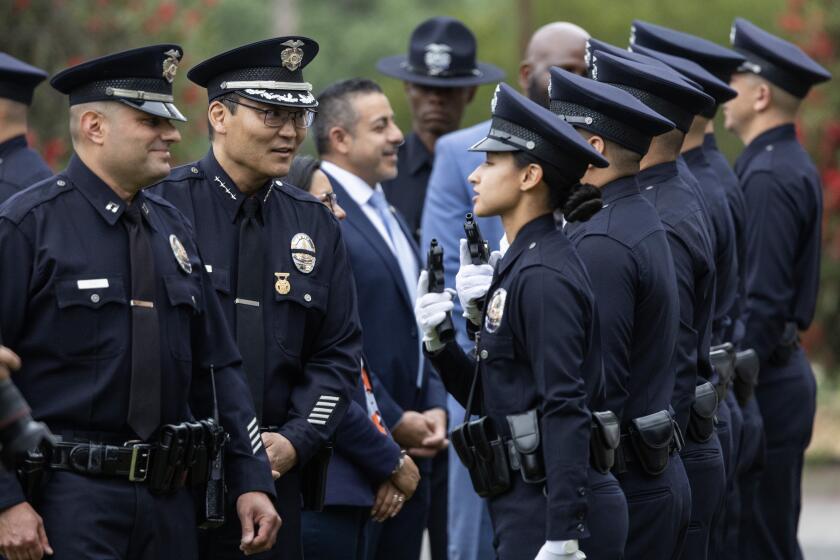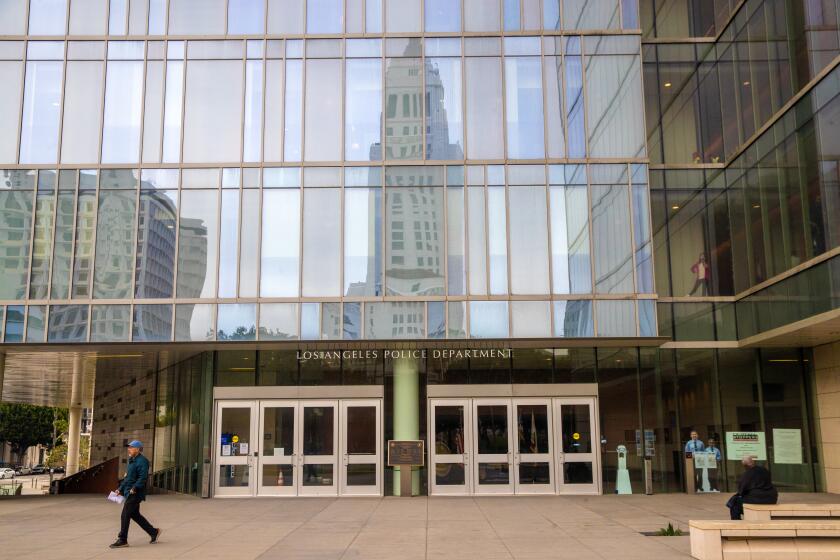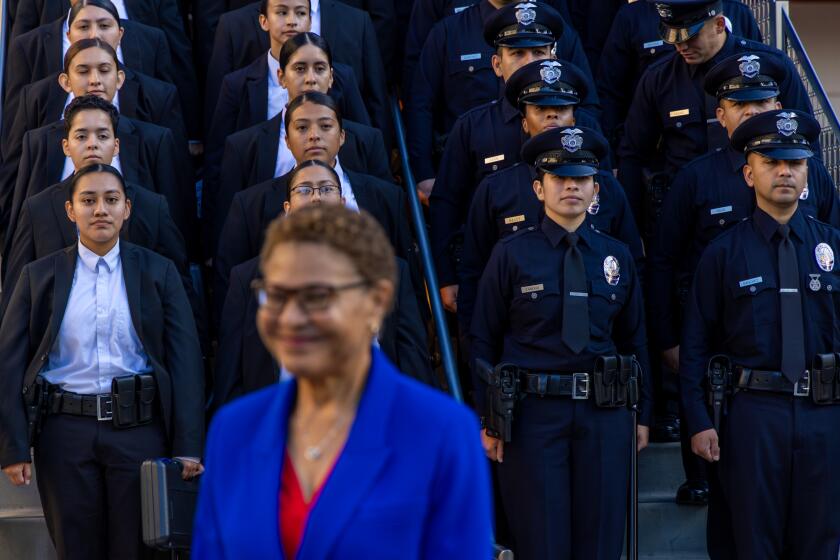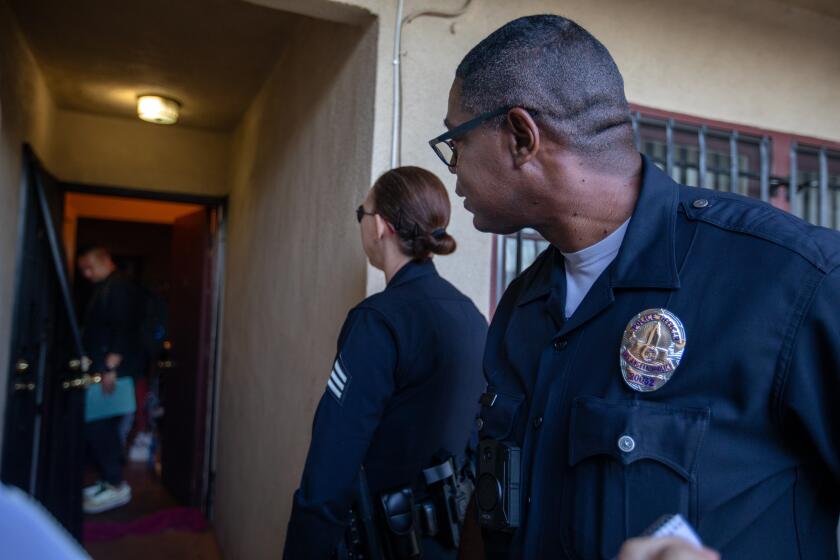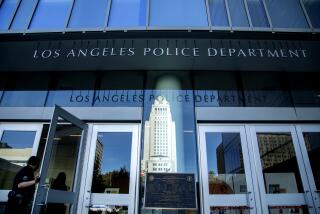Crime stats disappear from public view amid LAPD records system overhaul
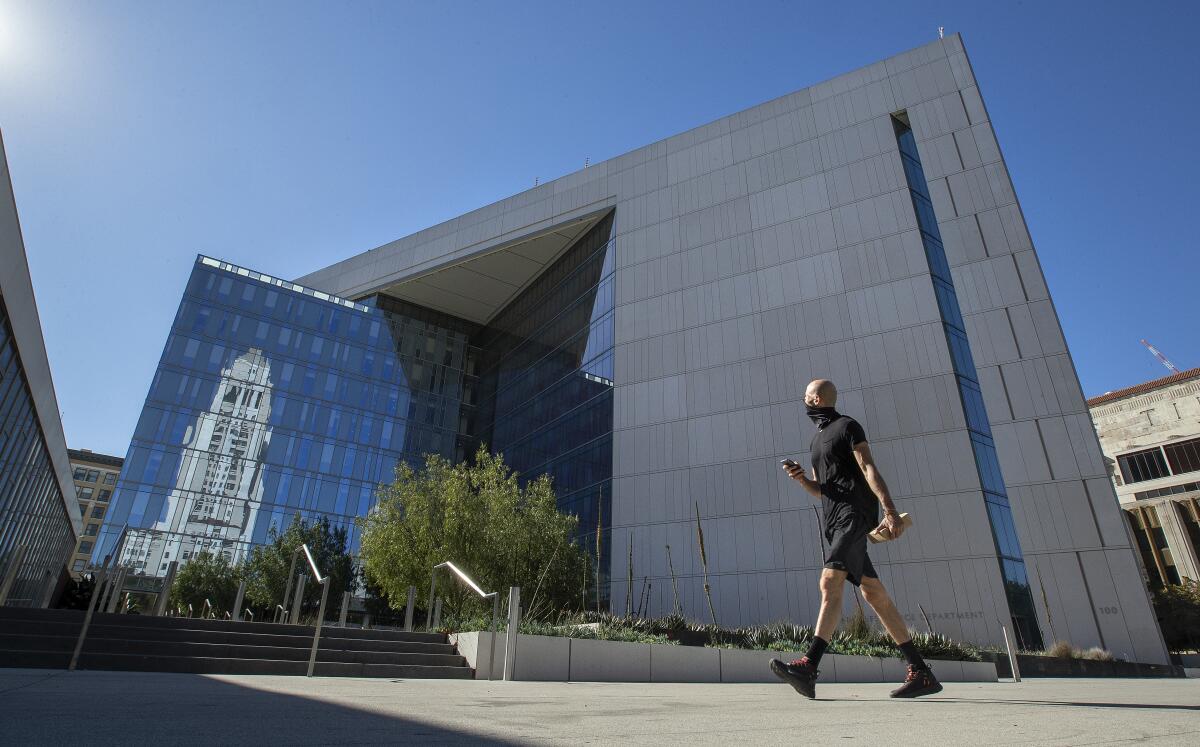
It’s hard to say which way crime in Los Angeles is going these days.
The Police Department has stopped posting crime numbers to its public website after rolling out a new recordkeeping system and changing the way it counts burglaries, assaults and other crimes.
Officials say that the changes will more accurately capture the level of public safety citywide, and that efforts are underway to get the statistics back online for the public. But for months there has been no easy way to track crime trends in the city.
Police are still providing up-to-date numbers to city officials upon request, and interim Chief Dominic Choi delivers his crime picture briefing to the Police Commission every week.
As the Police Commission continues its citywide listening tour to hear about what residents want to see in the department’s next leader, many of the stops have seen a low turnout.
The department used to release weekly crime reports with breakdowns on the number of offenses and arrests for all violent and property crime categories from the prior week and the year-to-date for the entire city. But the familiar multicolored tables have since disappeared from its site.
LAPD officials added a disclaimer to the site’s crime page about the department’s shift to the National Incident-Based Reporting System, which will bring it in line with federal guidelines aimed at gaining more detailed crime data.
“We are hoping to have both the Open Data Portal and crime statistics both and running in the next few months,” Lt. Christopher Chase of the Compstat Division said in an email to The Times. “It is a Herculean task but lots of smart people are working on it!”
In his latest briefing Tuesday, Choi highlighted figures showing that overall violent crime — which includes homicides, robberies, rapes and serious assaults — is basically unchanged from this time last year, while property crime is down roughly 3%.
Officers from the LAPD’s Mission and Foothill divisions allegedly engaged in illegal searches, turned off their body cameras and stole items from people they stopped.
Although nonfatal shootings are down citywide, homicides have risen nearly 11% compared with the first half of 2023, Choi told the commission. He said there is no single explanation: “No trend of a gang feud or no trend of a particular race war.” The increased bloodshed bucked a trend seen in many large U.S. cities that have seen slayings decline this year.
Of the LAPD’s four geographical bureaus, South L.A. has had the highest number of homicides this year: 47, 14 more than in the same period in 2023. Worryingly, Choi said, the city has seen a nearly 18% jump in robberies — an additional 585 incidents — over the same period last year, with the Rampart, Southwest and Wilshire areas seeing the biggest increases.
The downtown area has seen the largest increase in commercial burglaries, with 106 more incidents, an increase of about 15% from the first half of last year. Residential burglaries are also up, particularly in the Wilshire and Hollywood areas, while Foothill has seen one of the largest jumps in stolen vehicles, with an additional 153 thefts.
Criminologists and others who study crime have long cautioned about the reliability of statistics reported by police agencies, warning that the numbers are open to manipulation for political purposes and often provide only a narrow view of the ebb and flow of violent crime, which has been trending downward for decades.
In efforts at transparency and uniformity, departments around the country are slowly phasing into the FBI’s National Incident-Based Reporting System, which launched in 1988 and is supposed to collect data on a much wider array of offenses.
The LAPD was among the last big-city agencies to make the leap, said Liberty Vittert, a data sciences professor at Washington University in St. Louis.
The older system could leave some crimes overlooked by recording only the most serious offense that occurred during an incident. In a robbery-homicide, for example, only the killing would be registered. With the FBI system, both acts are counted separately.
A Times review shows the LAPD’s academy is graduating about half the number of recruits needed per class to keep pace with Mayor Karen Bass’ ambitious plan to expand the department to 9,500 officers.
Although most agencies that made the switch to the system reported “growing pains,” Vittert said she found it odd that the LAPD would stop reporting yearly crime statistics. For all their limitations, such reports are still an important resource for the public and elected officials, she said.
“Doing a year-over-year comparison” from the LAPD’s old system to the new one isn’t complicated, Vittert said. “I wouldn’t say it’s apples to oranges. It’s more like red apple to green apple.”
The statistical reporting problems first emerged in early March, when the LAPD unveiled its new records management system, which department officials said would replace several antiquated computer programs. Officers in the Central Bureau were the first to work with the new system.
The change includes going paperless, with officers now able to fill out crime reports and field interview cards on a native iPhone application designed for the department by Motorola, officials said. In the past, officers would have to return to their police station to type up reports — a time-consuming process that kept them from being out in the streets doing police work, said Deputy Chief John McMahon of the Information Technology Bureau.
Los Angeles is testing a new approach to crisis response — dispatching teams of unarmed mental health practitioners instead of police officers.
McMahon acknowledged that there would be “bumps in the road” as the department adjusts to a new way of doing things, but that ultimately the system would boost efficiency and productivity.
Department officials said they conducted site visits in Philadelphia and New York, which also recently updated their records systems.
But the changes have also been met with skepticism from police critics, one of whom contended at a commission meeting this year that the “aggregation” of disparate data sources has historically been used to justify further over-policing of communities of color.
“We need to kind of ask ourselves, whom does this efficiency serve? What purpose does it serve?” Matyos Kidane of the Stop LAPD Spying Coalition said at a meeting in March.
More to Read
Sign up for Essential California
The most important California stories and recommendations in your inbox every morning.
You may occasionally receive promotional content from the Los Angeles Times.
